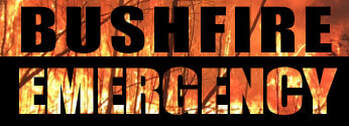|
EMERGENCY FEED AND WATER FOR WILDLIFE
The catastrophic NSW South Coast bushfires have destroyed millions of hectares of bush. It is estimated that over 1 billion animals have been killed, and those that have survived face life-threatening food and water shortages. While we don't usually recommend feeding wildlife, we are encouraging members of the public to help while these shortages continue. In addition to the guidlines on this page, we recommend two excellent resources, with links at the bottom of the page. |
We cannot stress too strongly the need to follow these guidelines when feeding wildlife in these circumstances: The animals are already stressed and may be injured. Social media sites have popped up across Australia, some of which are run by people with the best of intentions, but whose information and advice is sometimes incorrect, including suggestions for providing food that can harm wildlife and encourage predation by wild dogs or feral cats. |
|
BASIC "DO'S & DON'TS" Here is advice provided by experts within Wildlife Rescue South Coast, WIRES and National Parks on what to do, and what to avoid when providing food and water for fire-affected wildlife. Firstly, if you find injured or orphaned wildlife you should contact WRSC or other local wildlife volunteers. Wild animals are not used to being handled and can become severely stressed and may die as a result. If you come across an injured animal and there is no wildlife carer or vet available, here are some things you can do while waiting for help:
WRSC or other wildlife volunteers, Environment groups such as Landcare, and Local Land Services |
PROVIDING WATER Setting up water stations is a great idea, but remember that our native animals come in all shapes and sizes: Small animals can drown in large containers and large animals may not be able to access water provided with small outlets. Note that the suggestions provided here comply with NSW National Parks and Wildlife Service requirements:
|
PROVIDING FOOD Native animals have very specific requirements: what can be offered to one animal imay be harmful to another and could result in disease or even death.
|
EXCELLENT RESOURCES
|
We recommend the following resources which provide greater detail about what you should and should not do to help provide food and water for wildlife following emergencies such as these bushfires:
|
This page last updated February 2021





